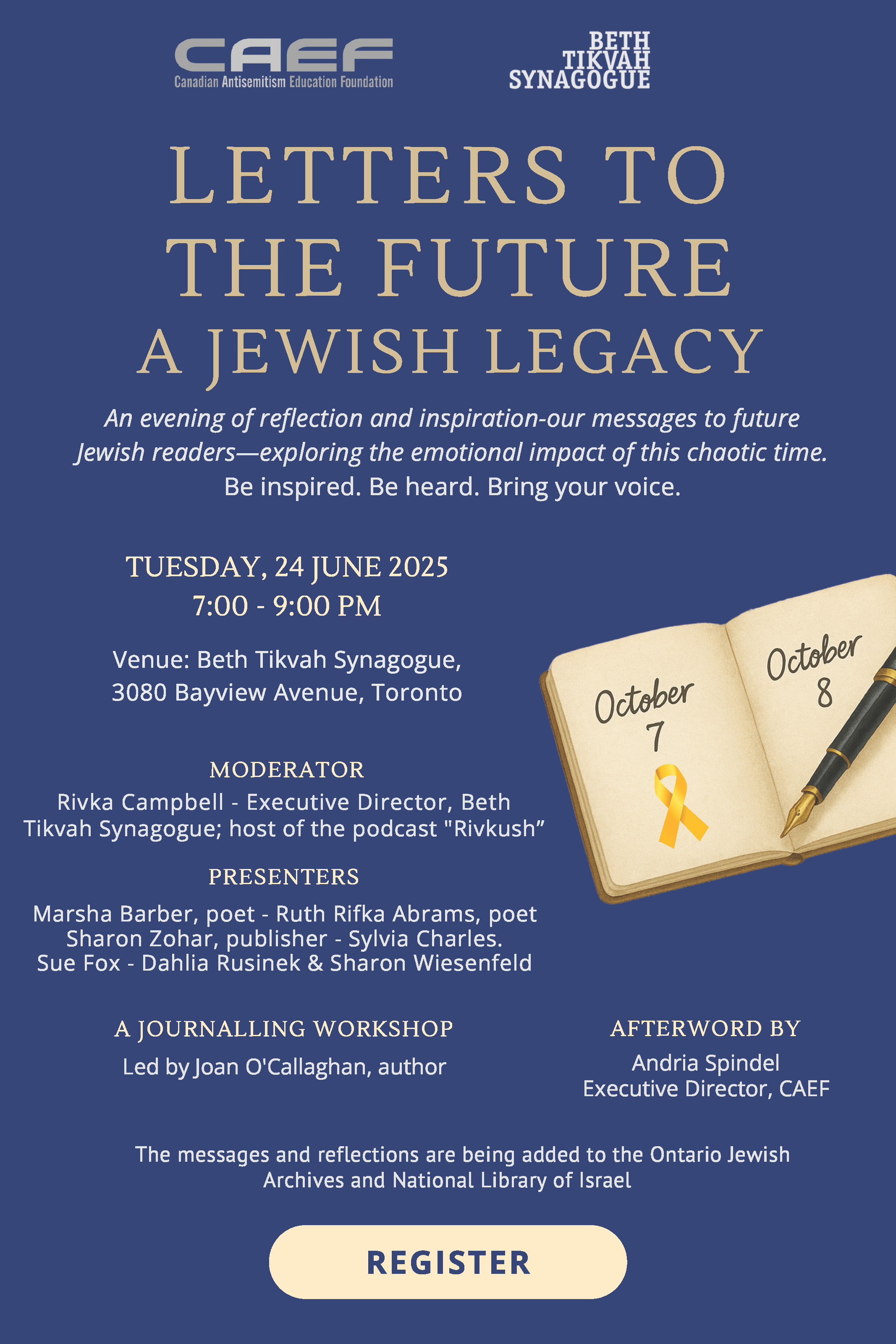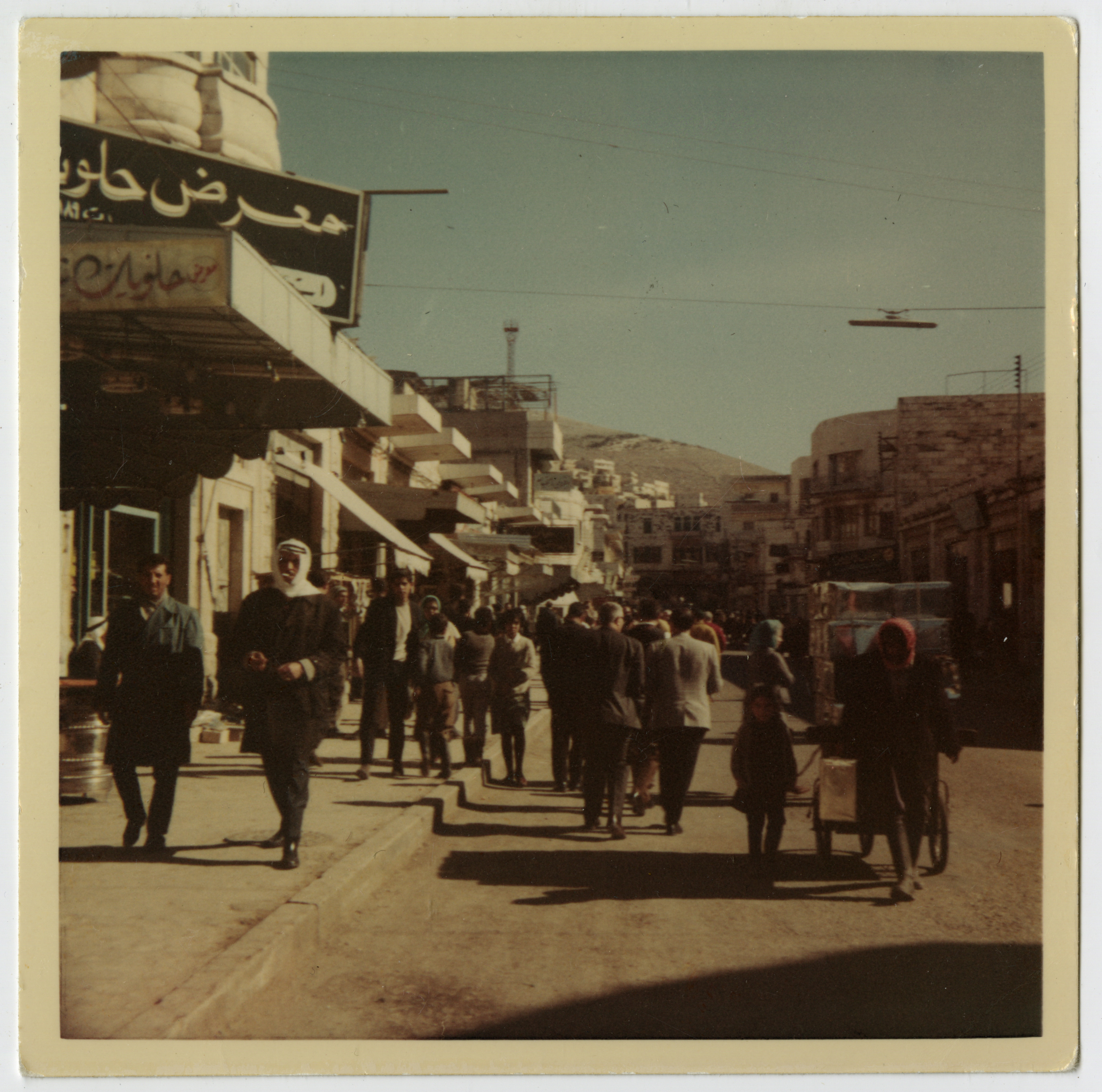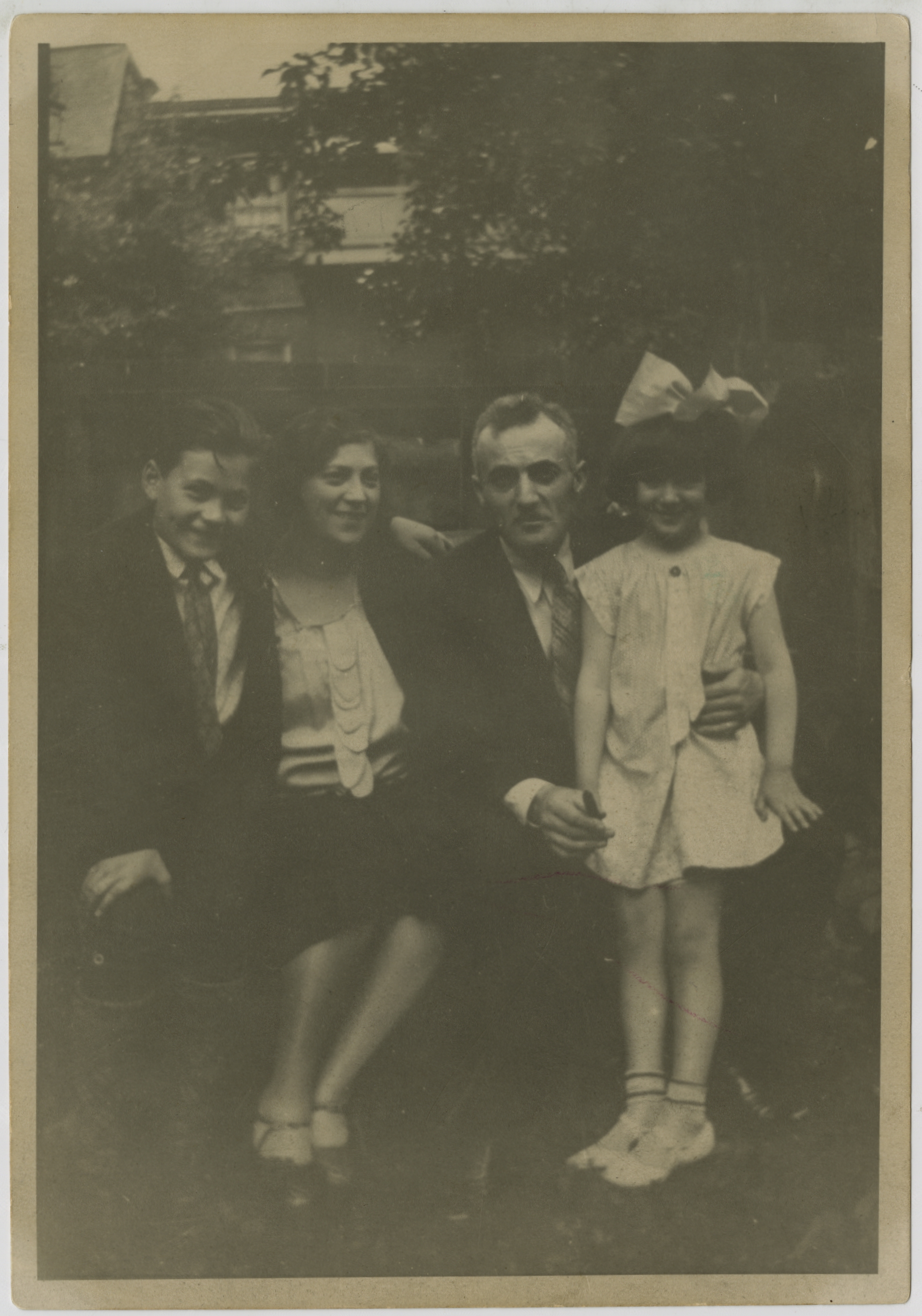Recently Processed
The OJA is pleased to announce that the following collections are now processed and available for consultation by researchers.
 Letters to the Future fonds.
Letters to the Future fonds.
n the wake of the October 7, 2023 Hamas attacks and the subsequent war in Gaza, a group of Jewish women in Toronto launched Letters to the Future—a grassroots initiative to document personal responses to a rapidly changing world. Participants were invited to write letters not for immediate recipients, but for future generations—sharing what it felt like to be Jewish during a time of fear, resilience, and transformation.
This newly processed fonds brings together poignant written reflections, event photographs, and ephemera from a powerful community gathering held in June 2025. More than just a collection of documents, it’s a heartfelt time capsule that captures the voices and emotions of those navigating Jewish identity, grief, and hope in turbulent times.
Now available at the Ontario Jewish Archives, the Letters to the Future fonds is a moving record of contemporary Jewish life and a testament to the power of personal testimony.
United Ostrowtzer Hilfs Committee fonds. Founded in 1924, the Ostrowtzer Hilfs Farein was named after the town of Ostrowiec in Poland. The society’s mission was to provide support to Ostrovtzers who had immigrated to Toronto, offering small loans, medical assistance, and a fostering a sense of community. In the aftermath of the Holocaust, the society extended its relief efforts to surviving Ostrovtzers around the globe and became known as the United Ostrowtzer Hilfs Committee. This collection comprises over three hundred letters sent to Max Hartstone in his role as secretary of the committee. These letters document the efforts of the United Ostrowtzer Hilfs Committee, in collaboration with Ostrovtzer societies worldwide, to aid and support to Holocaust survivors from Ostrowiec. They also offer insight into the immediate, postwar experiences of Holocaust survivors. The letters have been digitized and can be found here.
 Samuel Crystal fonds. Ken Crystal, son of Sam Crystal, donated his father's photographs from a 1967 mission to Israel. Taken some six months after the Six-Day War, the photographs document some of the locations that were conquered by Israel during the war, including Jerusalem, Nablus, and the Golan Heights. The photographs also depict a number of well-known individuals, including former Toronto mayor Nathan Philips, the then Israeli prime minister Levi Eshkol, and the then Israeli president Zalman Shazar. All 149 of the photographs have been digitized and can be viewed here.
Samuel Crystal fonds. Ken Crystal, son of Sam Crystal, donated his father's photographs from a 1967 mission to Israel. Taken some six months after the Six-Day War, the photographs document some of the locations that were conquered by Israel during the war, including Jerusalem, Nablus, and the Golan Heights. The photographs also depict a number of well-known individuals, including former Toronto mayor Nathan Philips, the then Israeli prime minister Levi Eshkol, and the then Israeli president Zalman Shazar. All 149 of the photographs have been digitized and can be viewed here.
 Thelma Harris Rose Family fonds. This rich collection of over 1000 photographs, documents and artifacts offers a glimpse into the everyday and the extraordinary lives of the Rose, Harris and Geldzaeler families, as well as their connected branches, the Perlman, Ruskin, Ruben, Shumer, Shayne, Spiegel, and Rothbart families. Documenting Jewish life in Toronto beginning in 1880 through the lens of one extended family, this collection will surely provide endless research opportunities for those interested in Jewish family life. Discover the collection
Thelma Harris Rose Family fonds. This rich collection of over 1000 photographs, documents and artifacts offers a glimpse into the everyday and the extraordinary lives of the Rose, Harris and Geldzaeler families, as well as their connected branches, the Perlman, Ruskin, Ruben, Shumer, Shayne, Spiegel, and Rothbart families. Documenting Jewish life in Toronto beginning in 1880 through the lens of one extended family, this collection will surely provide endless research opportunities for those interested in Jewish family life. Discover the collection
Canadian Association for Ethiopian Jews fonds. The Canadian Association for Ethiopian Jews was a non-profit organization that operated between 1980 and 1992 for the sole purpose of assisting Ethiopian Jews. Its main work consisted of rescue and relief, rescue taking the form of a visa program and relief taking the form of monthly stipends delivered to Ethiopians in need. The collection consists of records documenting the organization's work, including letters, meeting minutes and agendas, newspaper clippings, reference materials, audio records, an office manual, and an event poster. Ndali Ugboma, a former practicum student at the Ontario Jewish Archives, processed the collection. Discover the collection
John J. Glass fonds. John Judah Glass was the son of Morris and Pearl Glass. He was born in England in 1897 and came to Canada in 1907 (two years after his father). In the First World War, Glass served overseas in the 58th Battalion of the Canadian Expeditionary Force. He was awarded the Military Medal for bravery. After the war, he atended Osgoode Hall Law School and became a practicing barrister and solicitor. With his law degree in hand, Glass went on to have a fifteen-year political career that included serving as a trustee for the Toronto Board of Education, alderman at Toronto City Council, and Liberal MPP in the Legislative Assembly of Ontario. He left the world of active politics in 1943. This collection consists of records documenting Glass' involvement in the military, politics, and the Jewish community. Of note is a signed photograph of Vladimir Jabotinsky given to Glass when Jabotinsky was in Toronto in the 1920s. Discover the collection
 Bella Diamant fonds. Bella Diamant (m. Hershenhorn) was the daughter of Moishe and Sarah Diamant. She was born in Ostrowiec (Ostrovietz), Poland and had five siblings: Esther, Chaim Myer, David, Baruch, and Ruth. Bella met her future husband, Samuel Hershenhorn, in Poland. He was the son of Mendel and Miriam Hershenhorn from Drildz. The family arrived in Toronto sometime during the early 1920s; Mendel arriving first followed by Miriam and Samuel. The marriage between Bella and Samuel was arranged by their families and so Bella was sent to Toronto to be with him in 1927 and they married on 13 Nov. 1927. Many of Bella's relatives perished during the Holocaust, including both her parents, her brother David who died with his wife and daughter on a forced march, and her sister Ruth who was murdered by the Nazis alongside her young daughter. Chaim Myer was sent to live with Bella and Samuel in Toronto prior to the onset of the war and therefore survived. Baruch and Esther both survived the Holocaust and eventually moved to New York City. This collection consists of letters written to Bella from her father , siblings and cousins prior to the Second World War as well as letters from her surviving siblings in Frankfurt after the Holocaust. Discover the collection
Bella Diamant fonds. Bella Diamant (m. Hershenhorn) was the daughter of Moishe and Sarah Diamant. She was born in Ostrowiec (Ostrovietz), Poland and had five siblings: Esther, Chaim Myer, David, Baruch, and Ruth. Bella met her future husband, Samuel Hershenhorn, in Poland. He was the son of Mendel and Miriam Hershenhorn from Drildz. The family arrived in Toronto sometime during the early 1920s; Mendel arriving first followed by Miriam and Samuel. The marriage between Bella and Samuel was arranged by their families and so Bella was sent to Toronto to be with him in 1927 and they married on 13 Nov. 1927. Many of Bella's relatives perished during the Holocaust, including both her parents, her brother David who died with his wife and daughter on a forced march, and her sister Ruth who was murdered by the Nazis alongside her young daughter. Chaim Myer was sent to live with Bella and Samuel in Toronto prior to the onset of the war and therefore survived. Baruch and Esther both survived the Holocaust and eventually moved to New York City. This collection consists of letters written to Bella from her father , siblings and cousins prior to the Second World War as well as letters from her surviving siblings in Frankfurt after the Holocaust. Discover the collection
![Julius Katz photos, [195-?]. Ontario Jewish Archives, Blankenstein Family Heritage Centre, fonds 55, series 8, file 30, item 1. Julius Katz photos, [195-?]. Ontario Jewish Archives, Blankenstein Family Heritage Centre, fonds 55, series 8, file 30, item 1.](https://ontariojewisharchives.org/cms_uploads/images/F55_s8_f30_i001.jpg) J.P. Katz Fonds. Consisting of over 5.5 metres of textual records and photographs, this fonds documents Katz's work with Mizrachi-Hapoel Hamizrachi, the Toronto Zionist Council, the United Jewish Welfare Fund, and other Jewish organizations in Toronto, as well as his fundraising efforts for various theological seminaries and the Jewish National Fund. The records include correspondence and memoranda, meeting minutes, subject files, financial records, newspaper clippings and scrapbooks. The fonds also includes some family records and correspondence, and some business records from the Reliable Tobacco Company. Discover the collection
J.P. Katz Fonds. Consisting of over 5.5 metres of textual records and photographs, this fonds documents Katz's work with Mizrachi-Hapoel Hamizrachi, the Toronto Zionist Council, the United Jewish Welfare Fund, and other Jewish organizations in Toronto, as well as his fundraising efforts for various theological seminaries and the Jewish National Fund. The records include correspondence and memoranda, meeting minutes, subject files, financial records, newspaper clippings and scrapbooks. The fonds also includes some family records and correspondence, and some business records from the Reliable Tobacco Company. Discover the collection
 Canadian Overseas Garment Workers Commission series. In late 1947 and early 1948 representatives of the Canadian garment industry organized what became known as the Tailor Project, an immigration program planned to select more than 2,200 skilled tailors from the Displaced Person camps of Europe, facilitate their immigration, and give them jobs in the garment trade and housing in Canada. Canadian Jewish Congress, eager to rescue Holocaust survivors from the DP camps, knew the government would approve a plan to bring in skilled workers to fill a shortage in the garment trades. The Tailor Project was the first program that permitted large numbers of Jewish adults to immigrate to Canada following the Second World War. Max E. Enkin (men's clothing), Max Federman (fur workers), Joe Mack and others were sent by the Commission to Europe as part of the selection team. In response to Max Enkin's emphasis on providing accommodation, many individuals and community organizations reached out to those in need. Under the direction of the United Jewish Relief Agency, the office of the Canadian Overseas Garment Commission attended to the many and varying needs of the immigrant tailors, both Jewish and non-Jewish. Discover the collection
Canadian Overseas Garment Workers Commission series. In late 1947 and early 1948 representatives of the Canadian garment industry organized what became known as the Tailor Project, an immigration program planned to select more than 2,200 skilled tailors from the Displaced Person camps of Europe, facilitate their immigration, and give them jobs in the garment trade and housing in Canada. Canadian Jewish Congress, eager to rescue Holocaust survivors from the DP camps, knew the government would approve a plan to bring in skilled workers to fill a shortage in the garment trades. The Tailor Project was the first program that permitted large numbers of Jewish adults to immigrate to Canada following the Second World War. Max E. Enkin (men's clothing), Max Federman (fur workers), Joe Mack and others were sent by the Commission to Europe as part of the selection team. In response to Max Enkin's emphasis on providing accommodation, many individuals and community organizations reached out to those in need. Under the direction of the United Jewish Relief Agency, the office of the Canadian Overseas Garment Commission attended to the many and varying needs of the immigrant tailors, both Jewish and non-Jewish. Discover the collection